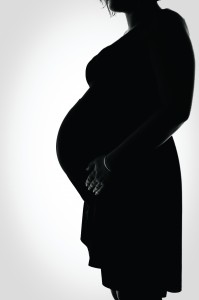SATURDAY, 29 JANUARY 2011
Late in the evening on 25 July 1978, a heavily pregnant woman is waiting in Oldham hospital outside Manchester for her baby to be delivered by a planned Caesarean section. She has been admitted under a false name, and only a handful of the staff know who she really is. The responsible doctor left the ward earlier that day, ploughing his way through the throng of reporters and news crews waiting outside. In the evening, he returns surreptitiously via a side entrance. The police are called to the hospital, and the journalists disperse. The birth is planned to take place at night to avoid the fierce mass media attention. At 11:47 pm, a healthy baby girl is brought into the world. As she takes her first breaths, a decade of embattled scientific research culminates in its final success: the first baby conceived by in vitro fertilisation (IVF) is born.Fast-forward 32 years, it’s October 2010 and Louise Joy Brown is now a grown woman with a child of her own. The IVF baby count has reached well over four million individuals world-wide and for his work leading to the development of IVF, retired Cambridge scientist Robert Edwards receives the Nobel Prize in Physiology or Medicine.
After having started their collaboration in the late 1960s, Robert Edwards and his colleague Patrick Steptoe soon realised that their research into assisted human fertilisation would not to go unnoticed. Their early publications involved the surgical removal of human egg cells using laparoscopy (nowadays known as ‘key-hole surgery’) and development of protocols for growing embryos from human reproductive cells. This work quickly made its way into the media spotlight: “Test-tube time bomb ticking away” read the blazing headlines of the day, and a BBC-produced TV programme about cell fusion and in vitro fertilisation opened with images of the Hiroshima bomb. Religious and political leaders lined up to denounce or criticise the developing technology. Even scientific titans joined in the chorus, as James Watson (of DNA structure fame) stated during a Washington conference in 1971 that the technology would “necessitate infanticide”.
During the first half of the 1970s not a single woman became pregnant through IVF and public scepticism remained high. An ectopic pregnancy—in which the embryo implants outside of the uterus—was achieved in 1975, but it was not until 10 December 1977 (coincidentally, the day Nobel prizes are given out) that Steptoe and Edwards could confirm the very first in utero growth of an in vitro fertilised human egg. The breakthrough was an instant media hit. News reporters started camping out in the hospital grounds, telephoto lens cameras were constantly aimed at the staff and expectant mothers, recording devices were smuggled in, private information and progress reports were smuggled out, reporters used bribes and disguised themselves as cleaners to gain access to the ward. There was even a bomb threat to the maternity ward in early July 1978.
Such frantic scenes are rarities nowadays, as IVF is an established therapy in most parts of the world. And given its success over the last 30 years, it is not difficult to characterise the development of IVF as one of the greatest scientific achievements in modern times. Its impact on the treatment of infertile couples since its initial implementation has been tremendous. In the UK alone, over 120,000 babies—roughly the population of Cambridge—have been born through the use of techniques now collectively termed ‘assisted reproduction’.
In the decades after the birth of Louise Brown, IVF therapy has grown into a regulated global industry. In the UK, the NHS offers up to three cycles of IVF to eligible couples. Some who fail continue their efforts abroad, paying thousands of pounds to private clinics. The success rate for IVF decreases dramatically with the woman’s age, dropping from nearly 30 per cent for under-35s to less than 1 per cent for women over 44. From a financial perspective, IVF is still hopelessly and increasingly ineffective. And as the average age of women undergoing IVF in the NHS continues to creep up—from 33 years in 1992 to 36 years in 2007—IVF clinics will find themselves confronted with women seeking treatment in their 40s or even 50s, for whom the success rate will be vanishingly low. Many people may balk at the thought of women in their 50s conceiving children, but considering that life expectancy is on the rise in many parts of the world, it may well become an accepted reality within the next few generations.
Although many of the doomsday voices raised in its early days have since been appeased, IVF is by no means an uncontroversial therapy. Today the techniques used continue to raise ethical concerns and stoke philosophical debate. In the same vein, as assisted reproduction techniques move further into unchartered territory, there is a continual requirement for re-evaluation of current moral standpoints. How do we judge the morality of new techniques when frontline science is moving rapidly?
One may take the same path as the Catholic Church and assume the relatively uncluttered viewpoint that “… artificial insemination and fertilization…remain morally unacceptable”. For the more discerning individual, each technique will likely present its specific moral problem. For example, in the case of egg donation, should egg donors receive payment (as sperm donors do), and to what extent will such a practice ultimately lead us to put a price on fertility? Or even on a human life? And what are the moral concerns in the case of pre-implantation genetic testing? As of yet, only a few hundred women undertake such testing each year in the UK, but it may well become more broadly available as techniques are made less costly and time-consuming.
In the case of testing for monogenic diseases such as cystic fibrosis and sickle cell disease, the dilemma may not be a particularly difficult one. But what about testing for late onset diseases such as Huntington’s disease or cancer, or diseases for which the results may well come out in terms of a risk rather than as a qualitative yes/no answer? And even with a certain answer, what right does a couple have to knowingly bring a baby with a disability or a predisposition to a life-shortening disease into the world, only because they desire a child? Or even a perfectly normal baby, for that matter?
As awe-inspiring and boundary-challenging as IVF and its derivative techniques are, they will bring us back to the same point over and over again: a couple desperately trying to conceive. The right to have a child is given without question to every person on the planet, and any attempts to curtail this right will inevitably raise questions of immorality. But, no matter how a child is conceived—naturally or by assisted methods—having a child should be regarded as a privilege, not a right. The decision to bring a new person into this world should never be taken lightly. It may be a bit much to ask prospective parents to consider complex issues such as overpopulation and the creation of homogenous gene pools, but since external factors may well force us all to make such decisions in a not too distant future, we may have to get used to the idea.
Robert Edwards received his Nobel Prize in December 2010 as the scientific father of a small country of children, one that started with the seminal birth of Louise Brown. His and Patrick Steptoe’s achievements are unquestionably extraordinary. The future is thus set for further scientific advances, and it is anyone’s guess what impact it will have on generations to come—or what moral choices it may eventually force them to make.
Sara Lejon is a postdoctoral researcher in the Department of Biochemistry



